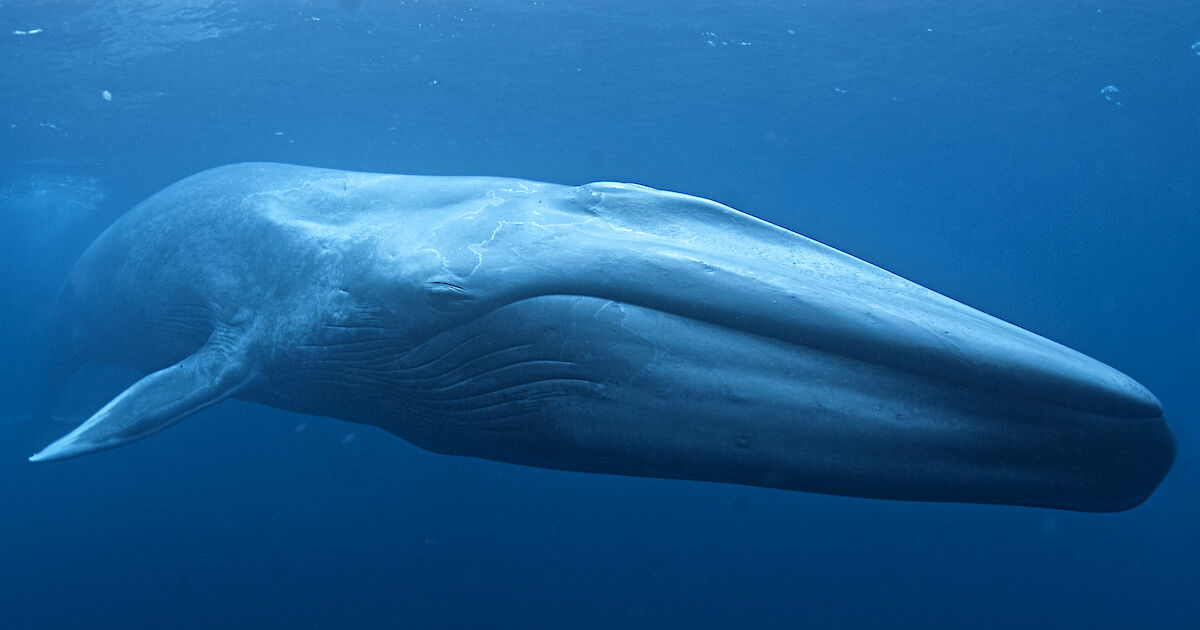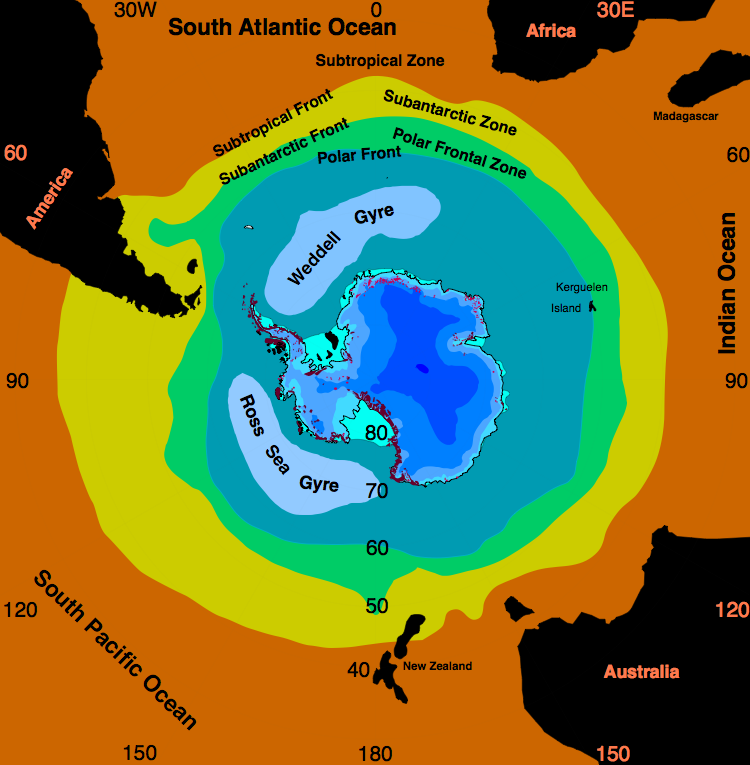The negative Ecosystem Impact Misconception
Introduction: “Interference” vs. Restoration
A common objection to Ocean Iron Fertilization (OIF) is that “it will disrupt marine ecosystems.” The premise sounds prudent—until you look at where OIF is done (iron-limited, open-ocean HNLC waters), how it is done (minute doses as a very diluted liquid), and what actually happens to communities when iron scarcity is briefly relieved. The evidence from Nature-published Southern Ocean experiments (e.g., EisenEx/EIFEX) and decades of field oceanography point to the opposite conclusion: in the right belts of the Southern Ocean, OIF behaves like ecosystem restoration, re-activating natural pathways (diatoms → krill → whales) that were throttled by the combined legacies of iron limitation and industrial whaling.
What “ecosystem impact” means depends on the baseline you assume
Today’s Southern Ocean is not the one that sustained hundreds of thousands of great whales and gigaton-scale krill stocks. After the removal of ~300,000 blue whales and ~500,000 fin whales, and the collapse of whale-mediated recycling, krill declined rather than increased (the opposite of a simple predator–prey expectation). That paradox is resolved when you consider the whale–krill–diatom iron cycle:
- Whales fed almost exclusively (blue whales) or largely (fin/humpback) on krill;
- Krill fed on diatoms and stored iron (“iron on the fin”);
- Whales returned that iron to the sunlit layer as liquid feces, repeatedly seeding diatom blooms that sustained krill, which in turn sustained whales.
Remove whales → less iron recycling at the surface → fewer diatom blooms → weakened krill reservoir → degraded, micobial-leaning ecosystem. In that light, carefully designed OIF is not random meddling; it mimics the fertilization service whales once provided and tilts the system back toward the historical diatom–krill state that built the planet’s largest animals.

How communities actually respond: two strategies, one lever (iron)
Plankton species are as different from each other as pines are from oaks. For OIF, one split matters:
- Exporters (e.g., many diatoms): grow, form resting stages, and sink en masse, carrying carbon below the winter mixed layer.
- Retainers: prefer to stay in the surface, recycling without large, fast-sinking export.
Iron in HNLC belts is the missing lever that lets exporters express their life-history strategy. In the Southern Ocean, diatoms dominate the iron-relief response provided silicic acid and light are adequate. They are also remarkably pathogen-resistant (silica frustules with micro-pores limit viral/bacterial entry), so their fates are set mostly by grazers (notably krill) and by physics.
Quantified response: patch building, magnitude, and tracking
In ship-tracked, Lagrangian patches (tens to hundreds of km²), iron is released as a very diluted ferrous sulfate solution into the upper tens of meters. The patch is followed by FRRf photophysiology, chlorophyll, nutrients, ²³⁴Th export deficits, and microscopy.
- Iron-to-biomass efficiency: field campaigns report very high leverage; even conservative readings support Fe:C conversion on the order of ≥ 15,000 tons of new biomass per ton of iron under favorable conditions.
- Chlorophyll rise: in EIFEX, mixed-layer chlorophyll reached ~3.3–3.4 mg m⁻³, versus a typical local baseline of ~0.2 mg m⁻³—a >10× increase characteristic of iron relief.
- Community: diatoms (e.g., Chaetoceros, Thalassiosira, Fragilariopsis) expand; outside the patch, background communities remain typical for the water mass.
The journey then forks: some diatoms are grazed and repackaged (fecal pellets), some sink directly as aggregates/spores. Both pathways favor export and food-web feeding—not stagnation.
Why this benefits, rather than harms, the food web
Krill—the most versatile grazer in this system—are specifically adapted to diatom feeding. They can filter particles down to ~6 μm, track patches, and crush thick frustules in a muscular gizzard lined with siliceous “teeth.” Diatom-rich pulses thus convert into krill biomass, which supports fish, penguins, seals, and whales. Historically:
- Whales (blue ~100–150 t; fin ~80 t each) consumed ~200–400 Mt krill per year;
- Minimum krill stock to support that consumption was ~600–1,200 Mt wet mass (≈0.12 Gt C).
- Densities on historic feeding grounds averaged ~300 krill m⁻², a living carbon stock exceeding a large diatom bloom’s standing stock.
OIF-triggered diatom pulses are, in that trophic context, food provisioning—not ecological injury.

Geographic selectivity matters (and supports restoration)
The Atlantic/Indian sector of the ACC, especially the northern Weddell Gyre boundary and Antarctic Peninsula–South Georgia corridor, historically held the densest krill–whale complex. Sea-ice dynamics (diatom growth under ice → larval krill feeding) and iron sources align there. Experiments performed along the Polar Front showed classic HNLC iron limitation and strong diatom responses. Practically, this sector is the first-choice theater for OIF that aims to rebuild krill and attract feeding whales, while exporting carbon during the ramp-up years when grazers lag bloom magnitude.

Safety, scale, and chemistry (why “disruption” is the wrong frame)
Dose geometry
Post-addition iron in the patch: 0.000056–0.000112 mg L⁻¹—delivered as a very diluted liquid.
That is 2,500–5,000× below the WHO drinking-water guideline (0.3 mg L⁻¹) and ~2,000–3,700× below a marine physiological sensitivity point (~0.21 mg L⁻¹).
Result: OIF operates thousands of times under human and ecological safety margins.
Speciation and lifetime
Fe²⁺ oxidizes to Fe³⁺, binds to natural ligands, is scavenged to particles, and is diluted/exported. Exposure is brief and self-limiting.
Oxygen and greenhouse gases
Southern Ocean ventilation + fast diatom export decouple surface oxygen from decay; experiments reported no hypoxia.
Using surplus macronutrients in situ can reduce downstream anoxia and CH₄/N₂O formation in over-enriched upwelling margins.
Species risk
Cold, turbulent, silica-bearing HNLC belts do not favor classic coastal HAB taxa. Toxin screening and stop rules gate operations.
“But isn’t any intervention harmful?”—why restoration is the more accurate lens
The hands-off position implicitly protects a degraded state: low-biomass, iron-starved, microbe-dominated systems with diminished krill and few whales. The historic state—documented by whaling records, krill surveys, and sea-ice phenology—was a diatom–krill–whale engine maintained by biological fertilization (whales). OIF does not impose a novel pathway; it re-enables the one evolution already selected at scale.
What a modern OIF program looks like (to ensure beneficial ecosystem impact)
- Where & when: Subantarctic/Polar Front bands in the Atlantic/Indian sector, aligned with ice-edge phenology, silicic acid fields, and retentive eddies/fronts.
- How: Tiny, phased additions of very diluted ferrous sulfate solution, tracked Lagrangianly for weeks.
- What we measure (before–during–after): community (microscopy + eDNA), photophysiology (FRRf), nutrients (N/Si/P/Fe), oxygen, pH, N₂O/CH₄, export (²³⁴Th, traps), zooplankton/krill, and higher predators (acoustics/visual).
- Stop rules: Any drift toward undesirable community, toxin markers, oxygen anomalies, or GHG spikes → pause/terminate.
- Objective: In early years, allow surplus diatom export (climate benefit) while krill/whales rebuild; over time, expect higher trophic routing plus continued net export.
Addressing four recurrent fears in “ecosystem impact” debates
- Fish kills: A coastal, eutrophication phenomenon tied to macronutrient overload and stagnation—not to trace iron relief in a storm-mixed Southern Ocean. No OIF campaign has recorded fish or zooplankton die-offs.
- Harmful algal blooms: HAB taxa thrive in calm, stratified, nutrient-rich nearshore waters. OIF responses are diatom-leaning and export-prone; toxin surveillance is standard.
- Iron toxicity: Patch concentrations are thousands of times below human and ecological thresholds, with rapid complexation and dispersion.
- System “dependence” on OIF: The goal is to re-ignite a self-sustaining biological pump (diatoms → krill → whales → iron recycling). As krill–whale loops strengthen, biological fertilization takes over an increasing share of the job whales historically did.
Conclusion: Ecosystem impact, correctly framed
When assessed against the actual baseline (a diminished, iron-starved Southern Ocean) and the actual mechanism (micronutrient relief that revives diatom–krill–whale coupling), OIF’s ecosystem impact in the targeted belts is beneficial. It feeds the foundational exporters (diatoms), supports grazers (krill), and invites back the apex recyclers (whales), while exporting carbon and avoiding the pathologies of coastal eutrophication. With dilute liquid additions, orders-of-magnitude safety margins, and transparent monitoring/stop rules, OIF is not a threat to ocean ecology. Properly sited and run, it is ocean restoration—a measured, modern stand-in for the fertilization service once performed at planetary scale by the giants of the sea.
← Back to all misconceptions